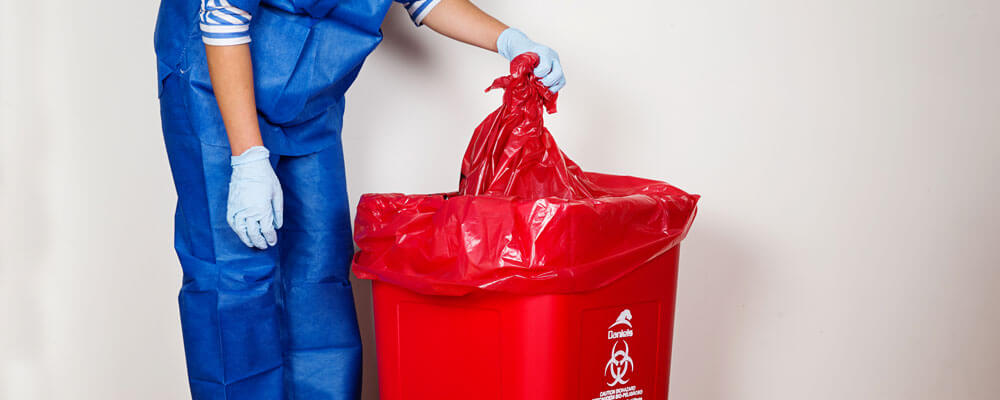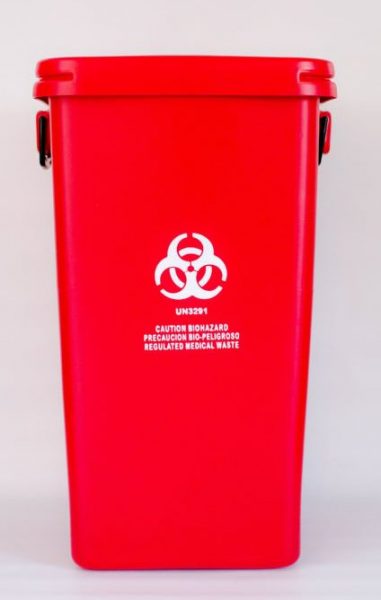Medical Waste Removal Excellence: Elevating Safety Standards in Your Center
Medical Waste Removal Excellence: Elevating Safety Standards in Your Center
Blog Article
Keep Ahead of Rules: Professional Suggestions on Medical Waste Disposal
In a world where the medical care market is constantly developing, it is imperative for medical facilities to remain ahead of laws when it comes to the proper disposal of medical waste. With rigid standards and frequent regulative modifications, it can be testing to browse the intricacies of this procedure. Nevertheless, with professional suggestions, centers can ensure compliance and alleviate threats related to improper garbage disposal. From comprehending the different classifications of medical waste to executing the ideal collection and partition approaches, this conversation will offer workable pointers and useful insights to help centers remain ahead of policies in the ever-changing landscape of medical garbage disposal.
Understanding Clinical Waste Categories
Understanding clinical waste classifications is vital for proper disposal and administration in healthcare facilities. Medical waste refers to any type of waste created by health care tasks that may pose a threat to public health and wellness or the setting. It is important to classify medical waste properly to ensure its secure handling, therapy, disposal, and transportation.
There are a number of categories of medical waste that health care centers require to be acquainted with. The most typical groups consist of infectious waste, pathological waste, sharps waste, pharmaceutical waste, and chemical waste. Each category has certain standards and regulations for its proper administration and disposal.
Pathological waste refers to human tissues, organs, or body components that call for unique handling and disposal. Drug waste consists of ended, extra, or contaminated medications that require cautious handling and disposal.
Staying Up-To-Date With Regulatory Changes
Remaining current with regulatory adjustments is essential for healthcare centers to make certain compliance and correct monitoring of clinical waste disposal. medical waste removal near me. With guidelines frequently advancing, it is necessary for health care facilities to stay current to stay clear of charges, fines, and potential damage to the environment and public wellness
To remain ahead of governing modifications, healthcare centers ought to develop a system for tracking and tracking updates. This can be done by registering for regulative e-newsletters, going to conferences and workshops, and actively getting involved in market associations. Furthermore, facilities should designate a team member or team in charge of staying notified and distributing info to appropriate stakeholders.
Normal interaction with regulative companies is likewise crucial. Health care centers need to establish relationships with regional, state, and federal companies to guarantee they know any kind of changes in guidelines that might affect their waste administration practices. This can be done through regular conferences, engagement in public remark periods, and aggressive interaction with regulative firms.
Additionally, healthcare facilities must think about partnering with waste monitoring companies that specialize in medical garbage disposal (medical waste disposal services with WasteX). These business are typically fluent in the most recent policies and can give assistance and support to guarantee compliance
Applying Appropriate Collection and Segregation Approaches
To efficiently take care of clinical garbage disposal, medical care centers must develop correct collection and partition techniques based on regulatory guidelines. Implementing these methods guarantees the risk-free handling and disposal of possibly dangerous products, shields the environment, and lessens the risk of infections and injuries to healthcare workers and the general public.
Correct collection and partition approaches include using assigned containers and classifying systems. Health care centers need to offer clearly labeled containers for different kinds of clinical waste, such as sharps, contagious waste, pharmaceutical waste, and non-hazardous waste. These containers must be color-coded and clearly marked to prevent confusion and advertise easy recognition.
Furthermore, medical care reference centers should educate their team on the proper treatments for collecting and setting apart medical waste. This includes informing them on the various kinds of waste, the ideal containers to make use of, and the relevance of following policies and standards. Normal training sessions and refresher courses should be conducted to make certain that team member continue to be up-to-date on finest methods.
Additionally, medical care centers need to develop a system for routine collection and disposal of medical waste. This might entail partnering with certified waste monitoring companies that focus on clinical waste disposal. These firms will certainly guarantee that the accumulated waste is transported and disposed of in compliance with regulative demands.
Picking the Right Disposal Approaches

Incineration is just one of one of the most typical and efficient approaches for disposing of certain kinds of clinical waste, such as pathological waste and sharps. It includes the regulated burning of waste at heats, reducing it to ash. However, incineration can release unsafe pollutants right into the air and contribute to air contamination.

Chemical treatment includes the use of chemicals to decontaminate and counteract the waste. Microwave treatment uses microwave energy to heat and sanitize the waste.
Making Certain Compliance Through Paperwork and Training
After thoroughly taking into consideration the appropriate disposal techniques for medical waste, medical care facilities have to make certain compliance with policies and minimize ecological influence by implementing effective documents and training procedures. This action is critical in preserving a secure and lasting setting for both health care employees and the general public.

Healthcare employees that handle clinical waste needs to receive suitable training on waste segregation, dealing with, and disposal procedures. By supplying thorough training, healthcare centers can empower their personnel to make educated choices and minimize the danger of incorrect waste disposal.
Verdict
To conclude, staying ahead of policies in clinical garbage disposal is crucial for health care centers. medical waste removal services. Understanding the different classifications of clinical waste, staying updated with governing adjustments, implementing appropriate collection and partition approaches, picking the ideal disposal approaches, and making certain compliance via paperwork and training are all necessary steps. By company website following these standards, health care organizations can effectively handle and dispose of clinical waste in a safe and responsible way
From understanding the different categories of medical waste to applying the appropriate collection and partition techniques, this discussion will offer workable tips and important insights to assist facilities stay in advance of laws in the ever-changing landscape of clinical waste disposal. - medical waste disposal services with WasteX
The most usual classifications include infectious waste, pathological waste, sharps waste, pharmaceutical waste, and chemical waste. Healthcare facilities should supply plainly identified containers for various kinds of medical waste, such as sharps, contagious waste, pharmaceutical waste, and non-hazardous waste. Medical care facilities must establish an extensive system to videotape and track all elements of clinical waste disposal, consisting of kinds of waste produced, quantities, and disposal approaches used. Healthcare employees address that take care of clinical waste must receive appropriate training on waste partition, dealing with, and disposal treatments.
Report this page